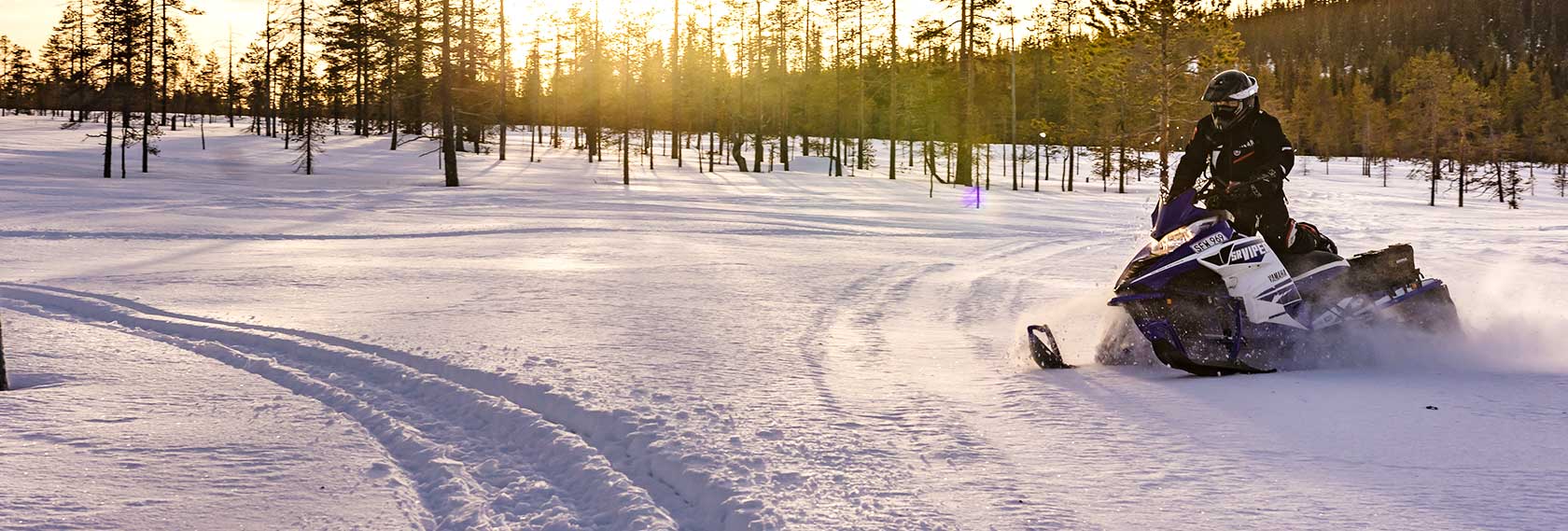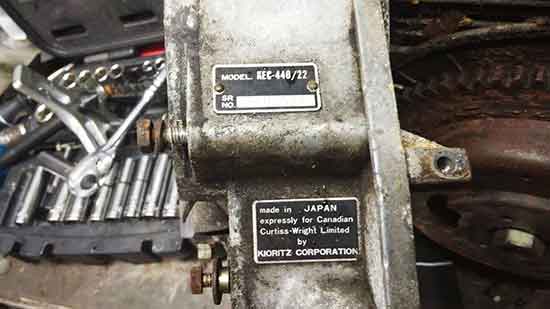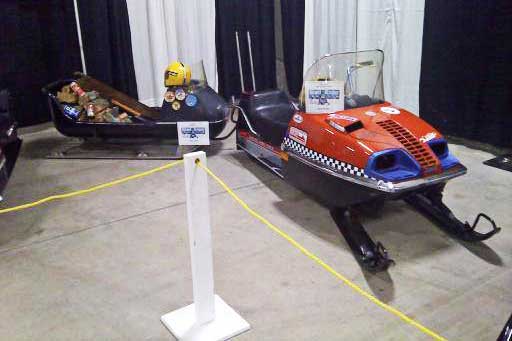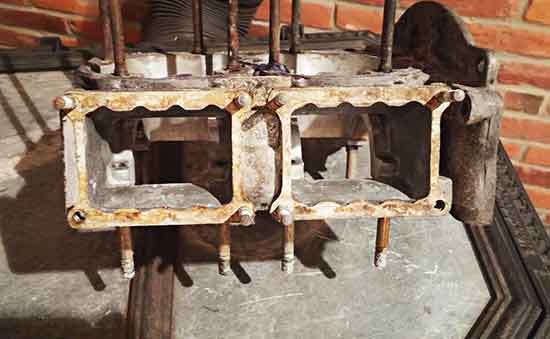

Four years ago I picked up a gem, it was set back, behind the crowd of others. After looking over the same old Ski-Doos, Cats, Yamahas, etc, I found an odd-ball sled that until now I had only seen online and in old magazines.
It didn’t take a close study to realize it was rough but there was still some meat on the bones. The Mercury snowmobile’s chrome front and rear bumper had some rust but was polishable. The steering was tight, it had a rust free steel fuel tank, but there wasn’t a track. What the heck, for 45 bucks it would be a cool build or parts sled.
While looking for odds and ends this past summer I stumbled upon a complete 1973 Mercury Max 440 in Plainville CT. It was similar to what I had bought four years ago but everything was still attached. While trying to maintain a good poker face and avoid drooling all over the machine, I noticed something odd. The engine tag read KEC-440/22. That was the ice breaker! Normally you find KEC-440/21 but the 22 designation is a for a higher output engine, 47HP, which was crazy for that time period.

My brother and I loaded her up and started working on it right away. First I took the skis off and replaced the bottoms, seeing I couldn’t even bolt up carbides. After melting and fusing hot iron and drilling, I laid some beads on the skis, just as extra insurance. Since the weld bead is stronger than the steel patch, it would hold up better to rough surfaces, like pavement.
Because the engine is mounted on the tunnel, essentially in the center of the sled, there’s less ground pressure on the skis, which can cause issues on hard packed surfaces. Several solutions ran through my mind… ski wideners help stability and steering but bend easily. Then I remember my grandfather and his buddies talking about the old days when they used to mount one-inch tall blocks between the leaf springs and spindles, which added enough ground pressure to make steering manageable.
Next was the chain case. Everything looked good, so I slapped in new seals, fresh oil and called it good. Now it was engine build time. The engine is very interesting. It’s a Canadian Curtis Wright but is made by Kioritz Corporation in Japan.

As we all know, every project has some sort of turmoil, now was that time. I had to remove the Salsbury clutch, so I made a puller out of grade 8 bolts. And to no surprise, the aluminum had bonded to the steel crank. Eventually the threads stripped and the clutch cracked apart, but it was still on the crank! They are noted for this ugly trait. I couldn’t use a die grinder without the risk of hitting the jugs. As much as I hated to use heat on the crank, there was little choice. I melted the aluminum until it popped off the taper.
I then stripped the engine down, installed new seals and re-bonded the case. After that the cylinders were honed, new wrist pin bearings were added and just about everything else was cleaned or replaced.

Then another speed bump tossed me off the Mercury. One of the rings was a couple thousandths too big. So another was ordered. Then I started to think about carburetion. The old Walbro bolted to the intake are notoriously temperamental, snowmobilers often swapped to a Tillotson. Being a reed engine I figured the best approach for snappy response was to go to a 38mm flatslide Mikuni.
One thing leads to another and the thought of fuel capacity came to mind. Last year we made it to the base of Greylock from Savoy with the five-gallon tank still half full. So, I thought, why not a tanker! I located a five-gallon tank from a generator that fit perfectly under the seat, completely out of sight. All I had to do was modify the fuel line adapter from the bottom of the tank to the front end and I’d be haulin’ 10 gallons for the long hauls.
I wasn’t too thrilled with the original color, the black hood was dull and boring. It needed paint, orange paint. Orange stands out in the crowd, it looks sharp, and still retains that ‘70s and ‘80s vibe.
Next is the exhaust, which is on hold as I consider my options. I picked up a decent set of 440 twin pipes that can be modified to fit the machine. They are as close as I can get to the engine size without dyno-tuning and testing, all for only a couple more horses. I’m still thinking this over. Until then (and part two of this project), see you on the trails. Be Bold and Ride Old!